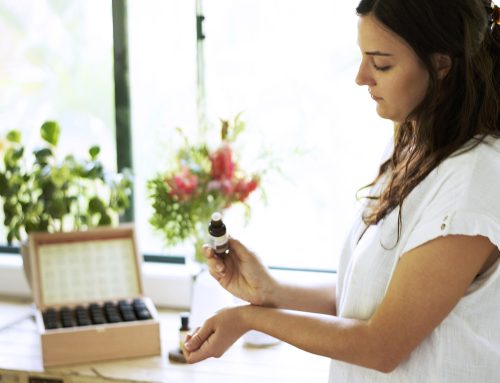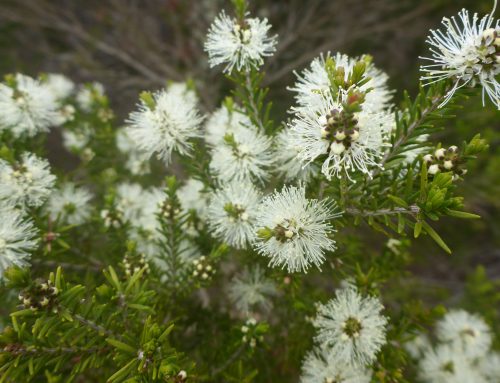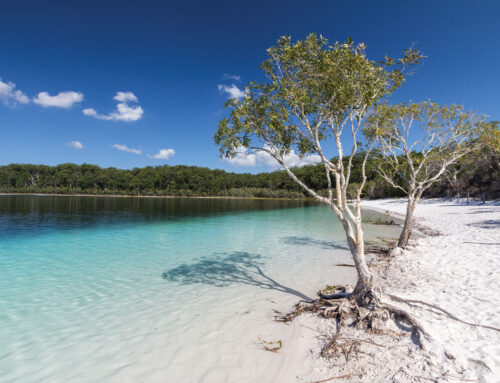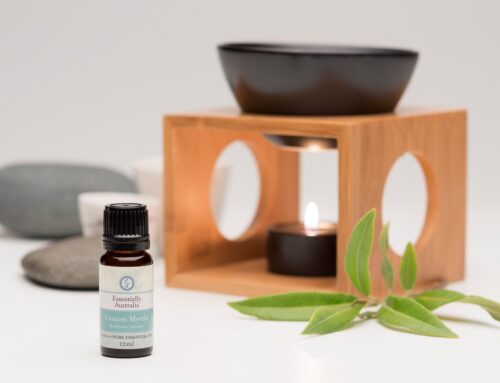Manuka oil shares many of the same wellness benefits as Tea Tree oil. However its aroma is considered to be more pleasant and soothing than Tea Tree oil.
MANUKA OIL IN AUSTRALIA
Manuka is a species of flowering plant in the myrtle family, native to south-east Australia and New Zealand. It’s one of the most widespread species in the Leptospermum genus. Plants naturally occur in New South Wales, Victoria, Tasmania and New Zealand, where it is one of the most widespread and important native shrub species.
Sometimes confused with the related species kānuka, there is an easy way to tell the difference between these two species. If you feel their leaves, you will discover that kānuka leaves leaves are soft, while manuka leaves are prickly.
Evidence suggests that Manuka originated in Australia. Seeds are believed to have traveled by strong wind activity from eastern Australia to New Zealand. Today, Manuka is much more common in New Zealand than in Australia.
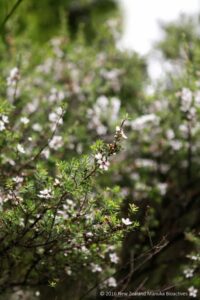
Manuka oil plants
INDIGENOUS USE OF MANUKA
In Australia, Leptospermum plants were an excellent source of honey for local native bees. These native bees hives would have an excellent supply of native, healthy honey for Australia’s indigenous communities. In addition, the leaves would have been used for antibacterial purposes, often by grabbing fresh leaves off the bush and wrapping them around cuts and infections.
Manuka was used in pre-European times by Maori, and still is. A liquid extract derived from boiling the leaves was ingested to reduce fever and for urinary conditions. When boiling the leaves, the steam was inhaled as a remedy for head colds. Sometimes, the leaf extract was applied topically to relieve stiff muscles and aching joints. ‘Pai Manuka’ – the white gum derived from the tree – was given to nursing babies and used as a treatment for burn injuries. Chewing Manuka bark is believed to have a relaxing and calming effect on the body and mind and enhance sleep.
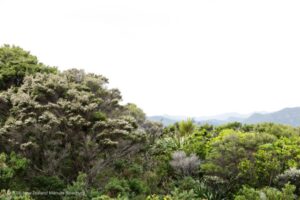
Manuka trees
MANUKA PLANTATIONS
Currently most Manuka essential oil is harvested from wild stands in New Zealand. However, more and more plantations are being established in New Zealand to meet the worlds growing demand.
Although in Australia there has been a concentration on Manuka trees for honey collection from wild stands, today also plantations are being established.
Manuka is sustainably harvested by pruning, which means harvesting only the tops of the branches. This allows the tree to continue growing and flourishing over its life cycle of 20-30 years. The essential oil is extracted via steam distillation. The steam from boiling water causes the plant’s cell walls to open allowing the essential oil to be released.
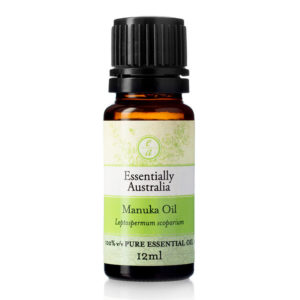
MANUKA OIL BENEFITS
Manuka oil has a calming, fresh and earthy, slightly sweet aroma with a hint of wood, spice and honey. Its aroma is often described as a more pleasant and soothing than Tea Tree. Packed with active phyto-nutrients, Manuka oil possesses a wealth of health & wellness benefits.
For centuries, New Zealand Maori have used Manuka to treat a variety of conditions, ranging from fevers and burns to skin disorders and rheumatism.
Best known for its active ingredient Leptospermone – a terpene produced by plants in the myrtle family – Manuka oil is extracted from the Manuka plant by steam distillation. As a result, a viscous, yellow, odourless liquid is separated from the distillation water. One of the most potent essential oils available today, with many medicinal applications and benefits such as powerful antiviral, antibacterial, anti-inflammatory and anti-fungal activity.
Studies have shown that Manuka essential oil possesses a 30 times stronger antioxidant and antimicrobal activity than Tea Tree essential oil. These remarkable properties effectively assist in the treatment of a wide array of skin irritations and infections, and help protect the skin against free radicals and bacteria while promoting overall immune health.
Manuka essential oil contains β-triketones. This group of organic compounds is useful for treating a wide array of condition such as acne, bacterial infections and fungus.
It’s safe to apply Manuka essential oil in small amounts directly to the skin. Many people experience Manuka to be more soothing, less irritating than Tea Tree oil when applied to the skin.

Soothing Manuka Oil Massage
BLENDING MANUKA OIL
Manuka essential oil blends well with other Australian essential oils in the citrus, camphorous, wood, mint, spice and medicinal aroma families, including: Australian Balm Mint Bush, Blue Cypress, Lemon Myrtle, White Cypress Leaf, White Cypress Wood, Kunzea, Tea Tree, Eucalyptus Peppermint Gum, Tasmanian Native Pepper, Rosalina and Australian Sandalwood.
APPLICATION TIPS
Because of its unparalleled medicinal qualities, Manuka essential oil is an excellent wellness & health promoting ingredient for personal care products including: massage oils, bath solutions, skincare products, soaps, creams, shower gels, treatment oils, serums and balms. It is regarded as safe to apply Manuka essential oil in small amounts directly to the skin.
FOLLOW OUR JOURNEY
We regularly post about our journey on our social media platforms. For example, we share usage tips, competitions and customer experiences. To follow our journey, please click on the links below:
https://www.instagram.com/essentiallyaustralia/
https://www.facebook.com/EssentiallyAustralia/
https://www.youtube.com/user/EssentiallyAustralia



